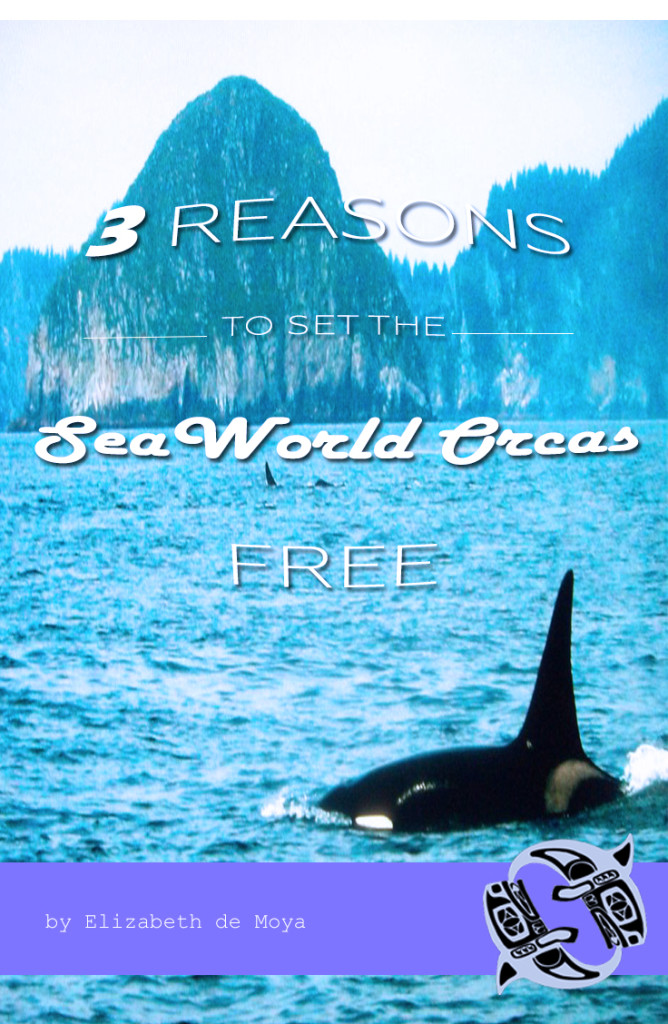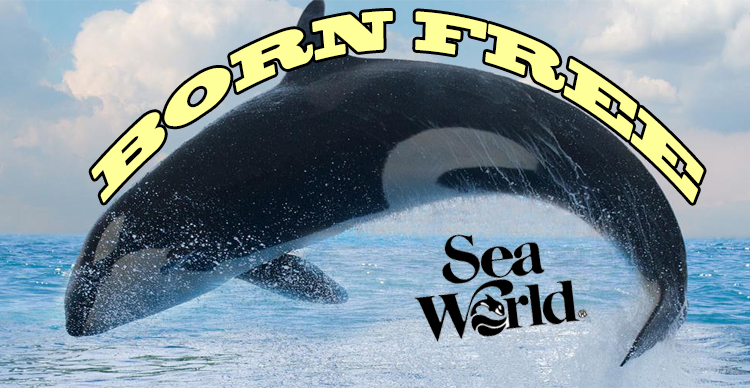SeaWorld has finally called off the breeding program after three years of backlash from the documentary Blackfish. But the question remains as to the fate of the 56 orca whales still in captivity at SeaWorld San Antonio, San Diego and Tampa.¹
Amid calls the let the animals live their remaining days out in captivity, I propose they may be better off in the wild. We have the technology available to track a pod of killer whales’ movements, and they are preternaturally wired to survive the ocean abyss.² They can swim back to SeaWorld if they decide they don’t like the vast open expanse of the sea.

Whales Are Really Smart
Whales have the largest brain in the ocean, but that does not necessarily mean they are cognitively aware. However according to nature documentaries I have watched, there are marine biologists that believe whales and dolphins are sentient beings, and who want to devote more research to communicating with them. If these animals have the perfect system for living in the ocean, and demonstrate the intelligence to adapt to a different situation, then maybe they will be okay out there. Would a person survive if you dropped him off on a deserted island, or in the middle of a massive forest? Possibly, it would also depend on the human. But people are not built to swim for leagues.
The Whole World Can Track Them
Technology has advanced to the point where it is certainly possible to track 56 killer whales as they swim around in the ocean. Their trainers can follow them around on boats, and even throw them a fish if they seem hungry, or do a trick. We have no idea what will happen once these animals are out to sea. I am not even sure if they are all the same kind or orca whale, which deserves some explaining.
Killer whales live together in communities called ecotypes that have a specialized territory and favorite kind of prey.³ These ecotypes are not known to interact or interbreed, so if the SeaWorld orcas are all different ecotypes, then it may result in separation or infighting. However we still have a lot to learn about these magnificent animals and their social structure. Will the small whales band together in a ragtag group of misfits? Or will they go crazy and then starve to death — or be eaten by sharks? Perhaps the older orcas will remember their families and return to them using the other worldly seventh sense that animals seem to develop when they are separated from loved ones over long distances. The whales that were born in captivity will be confused at first but they have their pod to help them figure it out. For example, invasive species have been introduced to different continents on multiple occasions. They may even come back every once in a while to say hello and get some free fish.
Most Orcas Are A-holes Anyway
Even if freeing the SeaWorld whales does go horribly wrong, we can justify it because orcas actually hurt other sea creatures all the time. That is why they call them “killer” whales. In the wild pods of killer whales usually kill and eat baby animals, because they are easier to catch. Some groups of orcas will torment a mother humpback whale until she is literally so exhausted that she is helpless to do anything while they eat her calf in front of her. Others wait until seal breeding season, swim up to shore and then play catch with baby seals for hours before they put them out of their misery. You can watch it on YouTube. I mean, when one of these beasts die none of the other sea animals necessarily mind.
Even if orca whales are dicks it does not justify imprisoning them in a tiny aquarium for the rest of their lives. That would be like locking up 56 random people because of a few (thousands of) murderers, child abusers and dictators. As human beings we have no way of knowing what it is like for a whale to swim through the immense vaulted canopy of the sea, or to see the things that they see, like underwater mountain ranges from above, and the way that the sun shines through thousands of feet of water. But we know that it is not right to take that away from them. Even if it is the most liberal thing you have ever heard it would still be a good idea to set the 56 SeaWorld orcas free as a pod.
Works Cited:
- http://us.whales.org/wdc-in-action/fate-of-captive-orcas
- http://phys.org/news/2010-03-smart-killer-whales-orcas-2nd-biggest.html
- http://us.whales.org/wdc-in-action/meet-different-types-of-orca
Elizabeth de Moya lives near San Diego, CA. She volunteers for the birds, and she works at the zoo. She is going back to school to study pre veterinary medicine. She has a BA in Linguistics from UC Berkeley.
